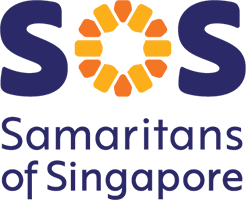Suicide Rate Lower, But Number Of Suicides at Highest in Recent Years
There were 409 reported suicides in Singapore in 2015. The suicide rate was 8.43, the lowest since an alarming spike of 10.27 in 2012. The suicide rate in 2012 was the highest seen in Singapore since 2006.
For the 10-19 age group, there were 27 suicides in 2015; an average of more than two teenage suicides a month. This was twice the number for this age group from the previous year, and one of the highest figures in recent years. This is despite a shrinking population of those aged 10-19, which has seen a decline of 7.1% since 2012.
Ms Christine Wong, Executive Director of Samaritans of Singapore (SOS), expressed her concern, “Although some other countries in the region with a similar societal structure as Singapore see a greater number of teen and youth suicides, this should be a strong sign for the relevant organisations working with youth here to work even more closely with SOS in our efforts to reach out to them.”
Usage patterns of several SOS services also indicated that increasingly more attention needs to be directed towards those aged 10-19. Of the calls received on the 24-hour hotline in which clients disclosed their age, 9.0% belonged to the 10-19 age group in 2015. In 2012, only 1.5% of those who disclosed their age were from this age group. For the Email Befriending service, 35.2% of all clients whose age was known were from this age group in 2015; more than twice the figure of 16.8% in 2012.
The most common stressors cited by those aged 10-19 through these SOS services included mental health issues, academic pressure, and relationship problems at home and in school.
Adolescence can be a difficult time where teenagers find themselves struggling with issues of identity and belonging. Suicidal behaviours in young people are usually rooted in multiple risk factors. From SOS’ contact with suicidal youth, it was noted that suicide risk increases when there are predisposing vulnerabilities such as mental health issues and external stressors coming from the home and study environment. All these can overwhelm at-risk teens who are already struggling to cope with the challenges of adolescence.
SOS also observed a reluctance in young people to engage familial help and support when they are going through a crisis. While this could be in part caused by a lack of connection in some families, teenagers in this age group also appear to experience difficulties sharing about their struggles. Many expressed their fear of being judged, as well as of the reactions they may receive from family members. The inability to share their innermost thoughts and feelings can make the crisis they are facing seem even more insurmountable, increasing their sense of helplessness and loss of self-esteem.
Ms Wong also noted that when young people are able to have a safe place to verbalise what they are going through and the necessary support to help them work through their troubles, it can aid in increasing their self-awareness and improving their coping and problem-solving abilities. This process can be useful to help youth understand that it is normal to experience problems in life and that it is alright to reach out for support when in distress.
In this respect, the role of community and an individual’s social support groups cannot be further emphasized. A culture of help-seeking can only be fostered when there is an environment of awareness, understanding, and sensitivity to the fundamental needs of those at risk of suicide. SOS has been working collaboratively with its community partners towards such an environment through community education and engagement talks, workshops, campaigns, and training in recent years. At the same time, SOS is increasing its outreach efforts to youth agencies and educational institutions in a bid to engage more youth on suicide prevention awareness.
*Note: population figures quoted in calendar year. All other figures quoted in financial year (April to March the following year)




